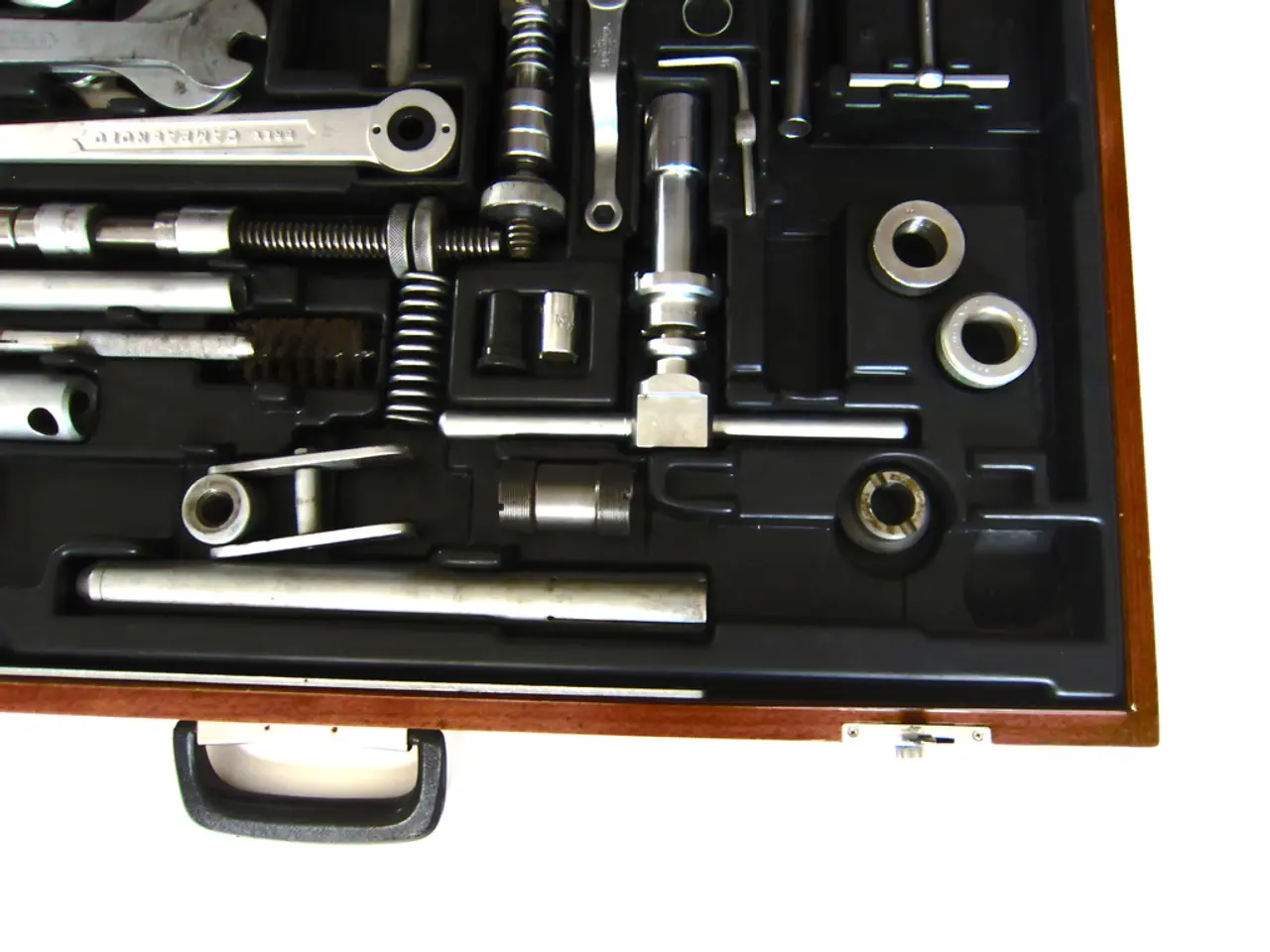Unearthed a remarkable photo-enhancing tool that effectively eliminates dust, yielding enchanting results!
Photographers know all too well the frustration of dealing with sensor dust. Dust and hairs can appear on backgrounds, surfaces, and products during photography, regardless of the cleanliness of the sensor. This is where two tools come into play: Retouch4me Dust and Adobe Lightroom's Spot Removal tool.
Retouch4me Dust is an AI-powered, dedicated retouching plugin that uses advanced algorithms to automatically detect and remove dust spots and sensor dust marks with a single click. Designed to work mostly offline, it integrates primarily with Adobe Photoshop and Capture One, aiming to drastically reduce editing time by automating complex retouching processes with high accuracy. It focuses on preserving natural textures while cleaning up imperfections efficiently.
On the other hand, Lightroom's Spot Removal tool is a manual tool where a user spots dust and blemishes one-by-one, applying fixes interactively. However, Adobe Camera Raw (part of Photoshop and Bridge) has a newer AI-powered Dust Removal feature in early access, which automatically detects and removes sensor dust spots using AI within the "Distraction Removal" panel. This feature speeds up dust spot removal but still allows manual correction for missed spots or false positives. Currently, this specific automatic dust removal AI feature is not yet fully implemented in Lightroom itself but is accessible via Camera Raw and Photoshop.
Comparing Key Aspects
| Feature | Retouch4me Dust | Lightroom Spot Removal (and Camera Raw AI Dust) | |-------------------------------|---------------------------------------------|----------------------------------------------------------| | Technology | AI-powered specialized plugin for retouching | Manual spot removal tool; newer AI dust removal in Camera Raw | | Automation | One-click automatic dust detection and removal | Partial automation in Camera Raw, but Lightroom is mostly manual | | Integration | Photoshop, Capture One (plugin or standalone) | Lightroom, Photoshop (via Camera Raw filter) | | Editing speed | Very fast (2-3 mins per image, offline processing) | Faster with AI in Camera Raw, but mostly manual in Lightroom | | Texture preservation | High, designed to maintain natural look | Good but sometimes requires manual touch-up | | Workflow location | Outside or inside Photoshop | Native to Adobe ecosystem; AI dust removal still early access |
In summary, Retouch4me Dust offers a faster, more specialized AI solution for sensor dust removal with offline processing and wider retouching capabilities, while Lightroom’s spot removal tool is mostly manual, and Adobe's AI-powered dust removal feature is currently limited to Camera Raw with early access and less integration in Lightroom itself.
Pricing and Recommendations
Retouch4me Dust costs $124 for a perpetual license. If you prefer a manual approach, the guide to the best photo editing software is available. Notably, commercial and editorial photographer Sean McCormack recommends Retouch4me Dust, citing its efficiency and natural texture preservation. Sean McCormack, known for his extensive experience with Lightroom, has tried out many plugins and presets. His latest book, Essential Development 3: 25 Tips for Lightroom Classic's Develop Module, is a valuable resource for photographers.
For those interested in trying Retouch4me Dust, readers can save 20% on the plug-in and other offerings with the code DCW20. However, if you're still on the fence, remember that every photographer's workflow is unique, so it's essential to experiment with both tools to find what best suits your needs.
One thing is certain: sensor dust is a common issue in photography, and tools like Retouch4me Dust and Lightroom's Spot Removal tool are here to make your life easier, whether you're a professional or an enthusiast. Mirrorless cameras are easier to clean compared to traditional cameras, but dust can still be a nuisance. With these tools, you can focus more on capturing stunning images and less on the pesky specks that sometimes appear.
- Photographers familiarize themselves with the nuisance of sensor dust, as it can appear on various surfaces during photography.
- Retouch4me Dust, an AI-powered retouching plugin, offers a one-click solution for automatically detecting and removing dust spots and sensor marks.
- Conversely, Lightroom's Spot Removal tool requires manual intervention for dust spot removal, but Adobe Camera Raw has a newer AI-powered Dust Removal feature currently in early access.
- Retouch4me Dust effectively preserves natural textures while removing imperfections at an impressive speed, making it a preferred choice for commercial and editorial photographer Sean McCormack.
- Lightroom's Spot Removal tool is primarily manual, but the new AI-powered dust removal feature in Adobe Camera Raw offers faster dust spot removal, albeit with less integration in Lightroom.
- For those seeking a specialized AI solution for sensor dust removal, Retouch4me Dust is available for a perpetual license at $124, offering offline processing and wider retouching capabilities.
- In the realm of technology, home-and-garden photography, and lifestyle, Retouch4me Dust provides a powerful alternative for those interested in improving their photography workflow.
- Regardless of camera type, whether mirrorless or traditional, dust can still be a challenge. With the help of tools like Retouch4me Dust and Lightroom's Spot Removal tool, photographers can spend less time on sensor dust cleanup and more time capturing extraordinary images.




